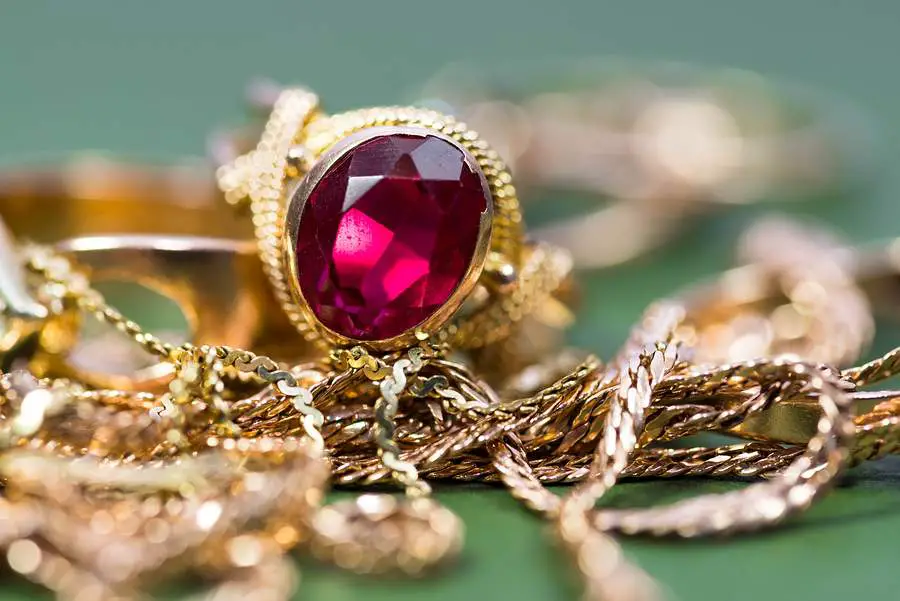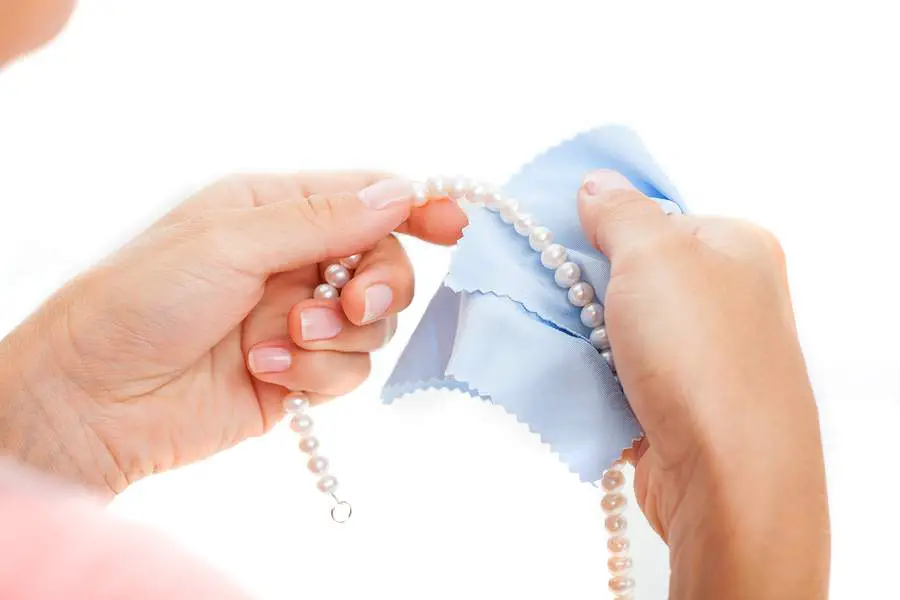Hey There! We may earn a commission from links on this page. This helps support the site and is at no extra cost to you. Thanks!
Fine vintage jewelry is lovely, superbly designed, romantic and, very often, unique. Whether you have one treasured piece or a valued collection, it is imperative that you keep it in first-class condition, not only so that it will always be at its most beautiful, but also to ensure its place in the family legacy as it is passed on to the next generation.

The precious gemstones and metals used in fine jewelry may need a bit more care than costume jewelry, but keeping the pieces cleaned and maintained is neither difficult nor time-consuming.
The methods we have here may not be the only ways to clean fine vintage jewelry, but, through trial and error, they are the methods that we prefer.
Before You Start
Inspect the piece for any damage or irregularities in the settings. Make sure that any gemstones are not loose. Have any needed repairs taken care of before you clean the piece.
Examine the piece for dust or other residues. It’s best to use a loupe or magnifying glass—some particles cannot be seen with the naked eye. Gently brush away the dust with a soft brush.

Gold
Pure gold (24-karat) does not tarnish, but it is extremely soft and rarely used for jewelry. Gold jewelry contains harder metals, such as silver, copper, and nickel, and they are what tarnish when exposed to air or chemicals.
If the gold jewelry does not have gemstones, you can give it a bubble bath!
- Pour a few drops of mild dishwashing liquid into a small bowl of sodium-free seltzer water or club soda. (The carbonation is great for loosening soil.)
- Put a piece, or a few pieces, into a jewelry strainer* and soak in the frothy mixture for about five minutes. Then swish the strainer around to “shake off” the soil.
- Take each piece separately, gently scrub with a soft brush and return to the strainer.
- When all pieces are clean, rinse the strainer under running water, then dry each piece with a soft cloth.
* A jewelry strainer is a cleaning basket (one to two inches in diameter) made of fine mesh stainless steel with a 4” handle.
Platinum
Like gold, pure platinum does not tarnish. Although stronger than gold, it also is usually mixed with other metals for use in jewelry and, therefore, can tarnish over time.
- You can use the “bubble bath” method above for a thorough cleaning.
- For a “quick fix” to maintain the beautiful luster of platinum, wipe with a soft cloth dampened with an ammonia solution (one part ammonia to six parts water).
Silver
If silver jewelry is just a little “off,” dull or a bit discolored:
- Mix a few drops of mild dishwashing liquid with a bit of warm water.
- Dip a soft cloth into the mixture and rub the jewelry until the shine is back.
- Then rinse the item in cool water and buff.
If the piece is heavily tarnished:
- Create a paste with one part water and three parts baking soda.
- Dab the paste onto the piece with a soft, clean cloth and rub. If there are crevices, use a soft brush to work the paste into them.
- When the paste turns gray, rinse the piece in cool water.
- Get another clean cloth and repeat the process until your piece is shining.
- Then buff with a clean, soft cloth.
You can also line a bowl with aluminum foil and fill with hot, salted water.
- Place your silver jewelry (as long as it has no gemstones) into the bowl and use a wooden or plastic utensil to move it around slowly so that all surfaces come in contact with the foil.
- In a few minutes, the silver should be bright and shiny.
- Rinse it under the tap, dry gently with a towel and polish with a soft cloth.

Gemstones
When your gemstones get dull, it’s due to the accumulation of dirt and grease under them. It’s easy to see that the accumulation is severely detracting from the gem’s beauty, but, perhaps more important, the debris is eroding the setting and loosening the prongs.
Check to see if the gemstones are backed by foil. If so, do not immerse them in anything! The damage to the foil will ruin the appearance of the gems.
Diamonds
- In a small bowl, mix a few drops of mild dishwashing liquid with club soda.
- Place the diamond jewelry inside a small jewelry strainer and submerge it into the frothy mixture for five to ten minutes.
- Then swish the strainer around to dislodge any loose grime from the jewelry.
- Take each piece from the strainer and gently scrub with a soft brush.
- When all the pieces are back into the strainer, rinse under running water.
- Use a soft cloth to dry and buff.
Rubies and Sapphires
Rubies and sapphires are scientifically the same mineral. It’s just that, as everyone knows, rubies are red. Everyone may not know that sapphires are all other colors except for red, though, by far, the most popular and valuable color for sapphires is blue.
To eliminate the dullness caused by the accumulation of foreign matter
- Clean rubies and sapphires by applying a mixture of mild dishwashing liquid and warm water.
- Gently scrub the stones and the mounting with a soft brush, especially underneath the stones.
- Rinse immediately with clean warm water and dry with a soft lint-free cloth.
You may also use the mixture of one part ammonia to six parts water in place of the dishwashing liquid.
Emeralds
Emeralds are very durable but technically softer than diamond, rubies, and sapphires, so may need a bit more care. Similar to the other gemstones, their sparkle diminishes to an oily and filmy appearance when dirt has accumulated, both on the surface of the stone and underneath.
- Begin by using a microfiber cloth to remove oil and dirt from the stone.
- Fill a bowl with lukewarm water and a few drops of mild dishwashing soap.
- Dip a soft brush into the soapy water and use it to gently but thoroughly clean the stone, including those hard-to-reach places.
- Rinse well (but no longer than necessary) in clear, lukewarm water.
- Dry and buff the jewelry with a soft clean microfiber cloth.
Pearls
When you remove your pearls, wiping them right away with a soft, damp cloth goes a long way toward keeping them clean.
Under ordinary conditions, give the pearls a thorough cleaning once a year.
This technique can be used on natural pearls as well as faux pearls.
- Lay the
pearls on a soft cloth. - Mix a little bit of mild shampoo with a cup of warm water and apply it to the pearls with a soft makeup brush.
- Gently rub each pearl.
- When you have finished, use a soft cloth dampened with warm water to remove soap residue.
- Lay the strand flat to dry to prevent the string from stretching.
Displaying your Clean, Shiny Jewelry
Maybe you’d like to be able to find a particle piece more easily. Or maybe the idea of using your sparkling clean fine jewelry for its artistic qualities appeals to you. Maybe it’s merely you like looking at your vintage jewelry. Or all three.
Top-loading floating frames (with hinges) work well as both storage and display cases. The frames are available at art supply and hobby stores. Open the frame, line with cotton batting (optional: cover batting with a decorative fabric), arrange your jewelry according to your convenience and/or your aesthetic sensibilities and secure to the batting with thin pins.
Or head over to Etsy to see a great selection of jewelry cases for storing your vintage jewelry.
Leave any questions you may have in the comments below, I love to help!
Happy Cleaning,
Andrea

